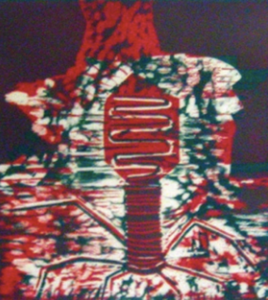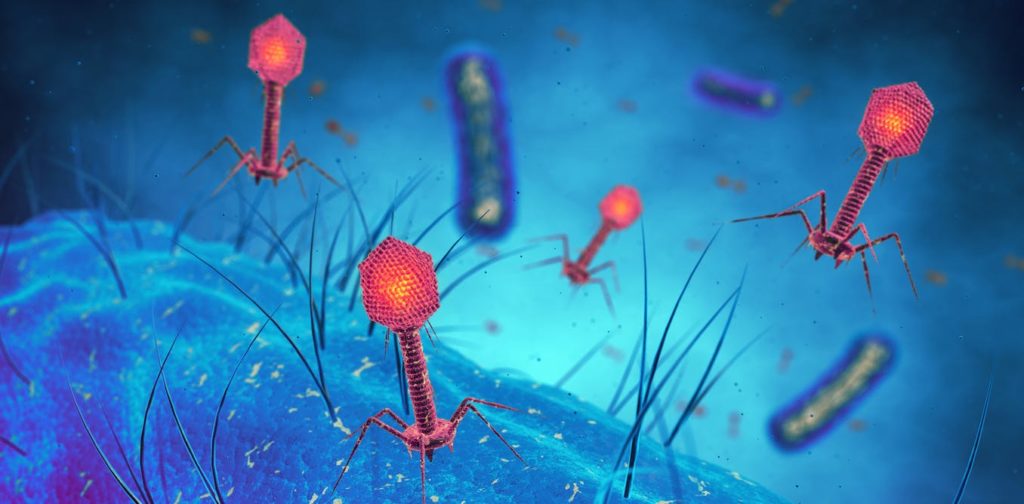Opening Pandora’s Box: Gene Editing and Its Consequences
HEALTH, ASIA--PACIFIC, BRICS, ORGANIC, GMO, GENETIC ENGINEERING, SCIENCE, 17 Dec 2018
John Bergeron – The Conversation
6 Dec 2018 – Today, the scientific community is aghast at the prospect of gene editing to create “designer” humans. Gene editing may be of greater consequence than climate change, or even the consequences of unleashing the energy of the atom.
CRISPR is an acronym for Clustered Regularly Interspaced Short Palindromic Repeats. This is the immune system that bacteria developed to protect themselves from infections by bacteriophages — the most abundant life form on the planet.
Smaller than any known life form
Bacteriophages were discovered in Paris by Felix d’Hérelle at the Pasteur Institute in 1917. He was studying a subset of patients spontaneously recovering from dysentery. D’Hérelle proposed that an antimicrobe smaller than any known life form had killed the bacteria in infected patients. He demonstrated conclusively the existence of this new life form, and named them bacteriophages: viruses that attack bacteria.

A Dennis Shields woodcut made in 1973 of a bacteriophage (first published in ASBMB Today March 2009).
Author provided (No reuse)
The bacteriophage has been studied intensely: its beauty was revealed with the electron microscope and its genome was the first life form sequenced.
Responding to a bacteriophage attack
In 2007, Rodolphe Barrangou and Philippe Horvath of the food production company Danisco collaborated with Sylvain Moineau of Laval University to solve a long-standing problem in yogurt production. They asked: Why were bacteria that were essential for the production of yogurt and cheese susceptible to bacteriophage attack, and how could this be prevented?
Barrangou, Horvath and Moineau made the astonishing discovery that bacteria actually had an immune system.
httpv://www.youtube.com/watch?v=yW0yA3qoH9A
CRISPR: Acquired Bacterial Immune Systems.
After an initial bacteriophage attack, a small number of surviving bacteria would recognize the DNA of the newly attacking bacteriophages. The surviving bacteria would then mount an immune response leading to the death of the bacteriophages. The bacteria that survived a phage attack would embed a fragment of bacteriophage DNA within their bacterial genome to serve as a “memory” of the infection.
Target and sever
Barrangou, Horvath and Moineau then discovered how the invading bacteriophages were eliminated. Upon recognition of the newly invading bacteriophage, the bacteria would target and sever the DNA of the invading bacteriophage.
httpv://www.youtube.com/watch?v=Bz0aN5qEkyw
Fond de recherche de Québec: CRISPR-Cas9 : L’origine de la découverte | Sylvain Moineau.
Biologists Jennifer Doudna and Emmanuelle Charpentier discovered further that “guides” had evolved in the bacterial immune system. Any bacteriophage whose DNA corresponded to the acquired memory fragment from a prior infection would be recognized and severed by a “guided” elimination machinery. Together, the bacterial immune system encompassing memory fragments of the bacteriophage DNA and the bacterial response machinery are known as the CRISPR-Cas9 system.
Commercial exploitation of the discovery followed. Doudna, Charpentier and others recognized that this new biological system could be exploited to edit genes in any life form.
httpv://www.youtube.com/watch?v=MnYppmstxIs
Bozeman Science: What is CRISPR?
The CRISPR-Cas9 system is not the first gene-editing system to be discovered. The late biochemist Michael Smith, while at the University of British Columbia, was awarded a Nobel Prize in 1993 for the discovery of a chemical means of gene editing with applications relevant to cancer and other diseases.
httpv://www.youtube.com/watch?v=khYP1dN5nRg
UBC Science: The Legacy of Dr. Michael Smith.
Bacteriophages as a potential solution
D’Hérelle observed that the same bacteriophage isolated from patients recovering from dysentery could be used to protect rabbits from an otherwise fatal infection. Coming before the discovery of antibiotics, d’Hérelle’s discovery inspired Sinclair Lewis to feature bacteriophage therapy of humans in his Pulitzer Prize-winning novel Arrowsmith.
One of the largest collections of bacteriophages globally is at Laval University. Sylvain Moineau is the curator, and the collection is named after Felix d’Hérelle.
The hope now is that bacteriophage therapy may be considered a potential solution to antibiotic resistance. However, any expectations of phage therapy are dwarfed by the current exploitation of the commercial benefits of the CRISPR-Cas9 system.
Today, the consequences of opening a Pandora’s Box are upon us. The application of the CRISPR-Cas9 system to generate designer humans through “germ-line” gene editing of harvested human eggs would create permanent changes that continue through successive generations, and the fears over these actions may be comparable to the consequences of nuclear warfare and climate change.
But there are other potential applications of “non-germline” CRISPR-Cas9, like the gene editing of disease. This has recently been successfully accomplished for muscular dystrophy in dogs. Akin to the myth of Pandora’s Box, the pessimism about “germ-line” gene editing may be offset by the hope for future benefit to humankind.
httpv://www.youtube.com/watch?v=lXmHA-XySmk
_________________________________________
Read more: Why we are not ready for genetically designed babies
John Bergeron – Emeritus Robert Reford Professor and Professor of Medicine at McGill, McGill University
John Bergeron gratefully acknowledges Kathleen Dickson as co-author.
Republish our articles for free, online or in print, under Creative Commons license.
Go to Original – theconversation.com
DISCLAIMER: The statements, views and opinions expressed in pieces republished here are solely those of the authors and do not necessarily represent those of TMS. In accordance with title 17 U.S.C. section 107, this material is distributed without profit to those who have expressed a prior interest in receiving the included information for research and educational purposes. TMS has no affiliation whatsoever with the originator of this article nor is TMS endorsed or sponsored by the originator. “GO TO ORIGINAL” links are provided as a convenience to our readers and allow for verification of authenticity. However, as originating pages are often updated by their originating host sites, the versions posted may not match the versions our readers view when clicking the “GO TO ORIGINAL” links. This site contains copyrighted material the use of which has not always been specifically authorized by the copyright owner. We are making such material available in our efforts to advance understanding of environmental, political, human rights, economic, democracy, scientific, and social justice issues, etc. We believe this constitutes a ‘fair use’ of any such copyrighted material as provided for in section 107 of the US Copyright Law. In accordance with Title 17 U.S.C. Section 107, the material on this site is distributed without profit to those who have expressed a prior interest in receiving the included information for research and educational purposes. For more information go to: http://www.law.cornell.edu/uscode/17/107.shtml. If you wish to use copyrighted material from this site for purposes of your own that go beyond ‘fair use’, you must obtain permission from the copyright owner.
Read more
Click here to go to the current weekly digest or pick another article:
HEALTH:
- U.S. Terminates Funding for Polio, H.I.V., Malaria and Nutrition Programs Around the World
- Autism, Made in the USA
- Big Pharma Is a Big Menace to Global Health
ASIA--PACIFIC:
- The Hawaiians Who Want Their Nation Back
- The Hidden Meaning of the Martial Law in South Korea
- The Machu Picchu Declaration of the Asia-Pacific Economic Cooperation-APEC 2024
BRICS:
- The “BRICS Sovereigns” vs the “Globalist Oligarchy”
- Cuba Joining BRICS Is a Lifeboat for Its Economy
- BRICS and G20 Value Platforms: A Comparative Analysis
ORGANIC, GMO, GENETIC ENGINEERING:
- Veganic Farming: How My Tiny Plot Produced 5,000 Pounds of Food without Using Manure
- Nothing New in New GMOs
- Alert! New ‘Redesigned GMOs’ Being Forced on Farmers and Consumers
SCIENCE:

